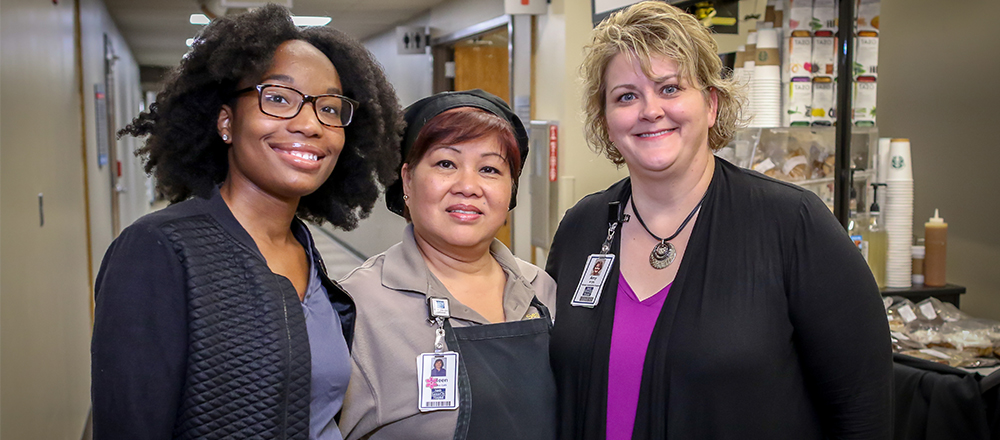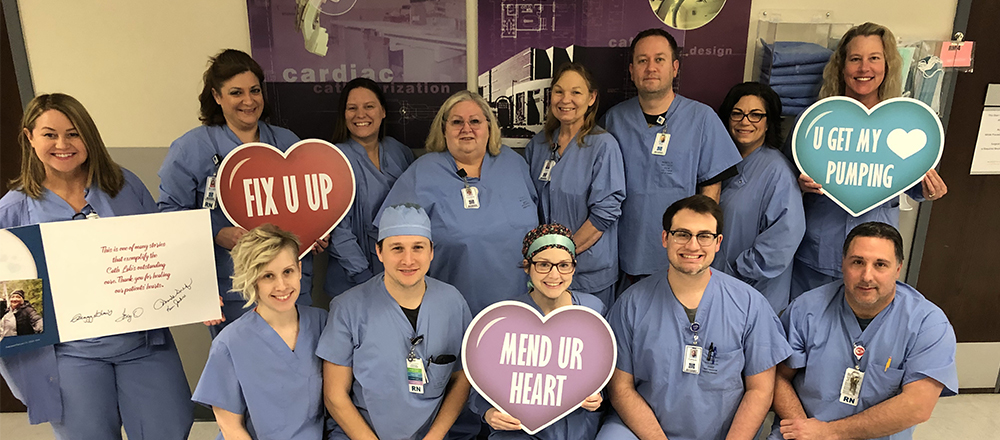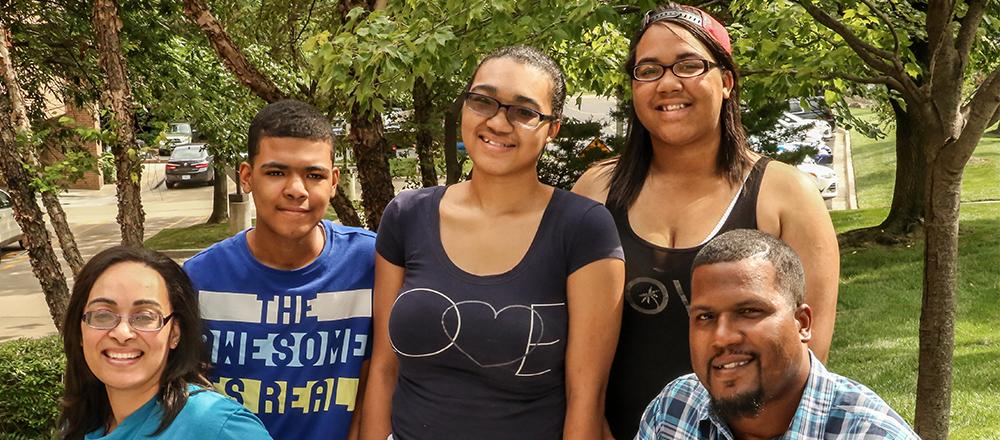
Leen Mahurin caters to everyone who visits the Seasons Express coffee cart near the ED each day. She knows who wants an extra shot of espresso or an iced skinny mocha. Many of her regulars work in Information Technology or the Emergency Department. Leen credits two employees from those areas, Amy Dewey, BS, RT(R), and Dora Scroggins, an ED tech, with getting her lifesaving care recently.
In the days leading up, Leen felt tingling in her right hand, with episodes of dizziness and blurred vision. Only age 53, Leen dismissed her symptoms as a vitamin deficiency but planned to follow up with her doctor. Time would run out before she could make the appointment.
On May 31, Amy, a coordinator in IT, remembered being later than usual that morning when she stopped by for her hot tea. While waiting, Leen mentioned numbness and tingling in her right arm. With a clinical background, Amy knew these were classic stroke symptoms. “She wasn’t acting normal and said she needed to sit, which isn’t like Leen,” Amy remembered. Coincidentally, Dora walked up at the same time.
Risk Factors for Stroke
- High blood pressure
- Irregular heartbeat
- Diabetes
- High cholesterol
- Smoking
Dora quickly grabbed a wheelchair and took Leen to the ED, where doctors determined she suffered a mini stroke, also known as a transient ischemic attack, or TIA, a warning that a full stroke may follow. “I am glad that we were in the right place at the right time. We are very protective of Leen and want her to be okay,” Amy said.
“We are here not only to treat our patients but also our coworkers, who are like family,” added Dora. Leen is grateful to her work family for their help. “Amy and Dora are my guardian angels. I am so thankful to them,” she said.
Think FAST
Know the warning signs and symptoms of a stroke.

Quick thinking by his coworker Ruth helped Larry successfully recover from a cardiac emergency.
As a registered nurse, Ruth Yimer provides lifesaving care to her patients, but not typically for her coworkers. Last fall, Ruth started her shift report for incoming night nurse Larry Baker, RN, ADN. “I noticed he was perspiring and was flushed,” Ruth remembered. “He asked if we could do report sitting down, which is unusual.”
Larry recalled feeling fine before coming to work, but as he walked the short distance from his home to the hospital, he felt short of breath and overheated. “I thought I would cool off in a few minutes once I got here,” Larry said.
Time didn’t help Larry feel better. His symptoms increased with dizziness and sweating. Ruth stopped the shift report and found Jeff Stephens, RN, the charge nurse.
Jeff and Ruth convinced Larry he needed help and called the STAT team. “Ruth could have just given report and went home, but instead she brought her concerns to me. She did the right thing for her coworker,” Jeff said.
“It was wonderful she was here for me,” Larry said. “We watch out for each other, which makes this a special place to work.”
Emergency staff took Larry to the Cath Lab, where he received a lifesaving stent that evening followed by a second stent a few days later.
While this was Larry’s first cardiac issue, his dad previously suffered a heart attack. “I didn’t think this was a heart attack because I didn’t have chest pain,” Larry explained. “If I was at home, I would have just laid down instead of going to the hospital.”
“I didn’t feel I was doing anything special. I was just concerned about Larry and wanted to be there for a friend,” said Ruth, who received the DAISY award for nursing excellence for assisting her coworker.
Learn the signs and symptoms of a heart attack or schedule a heart scan.



